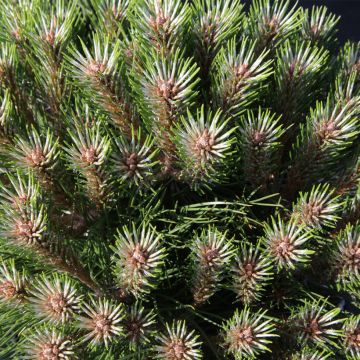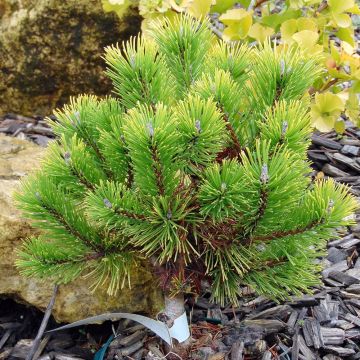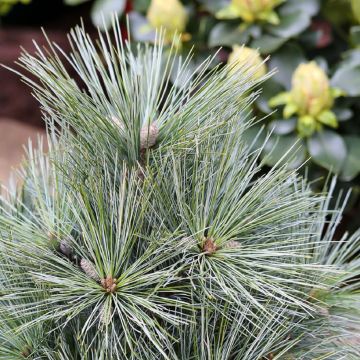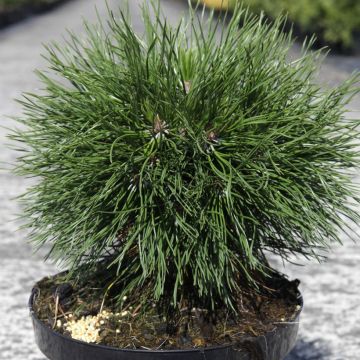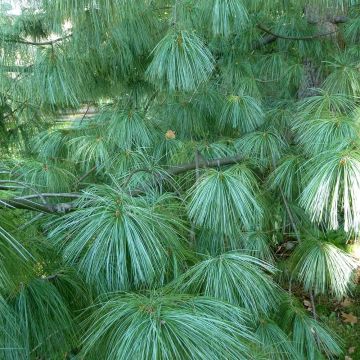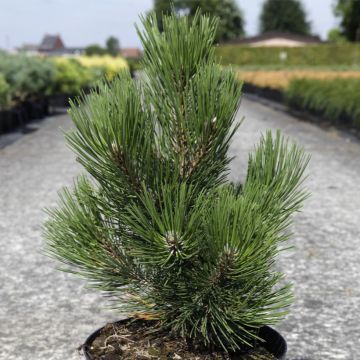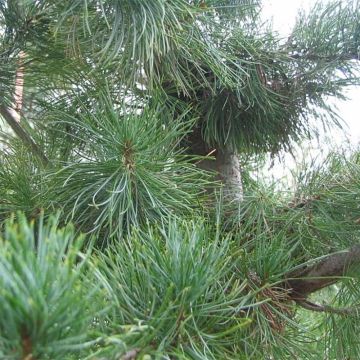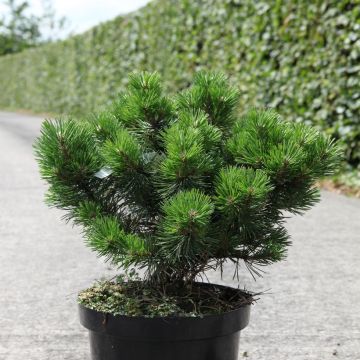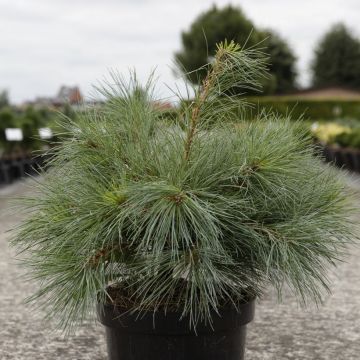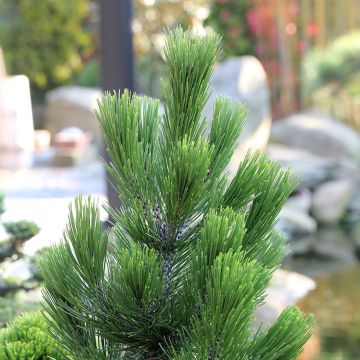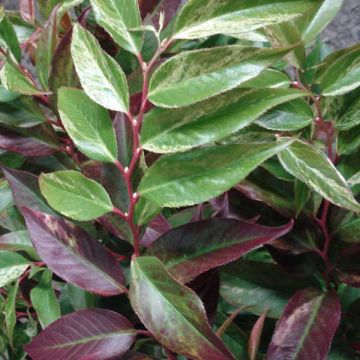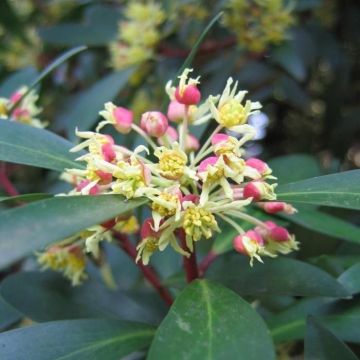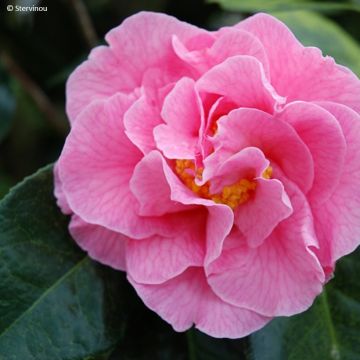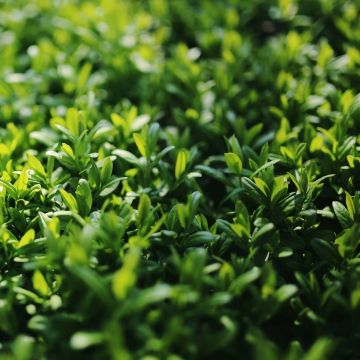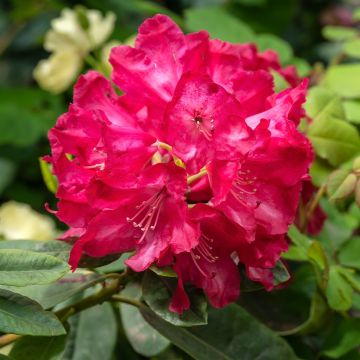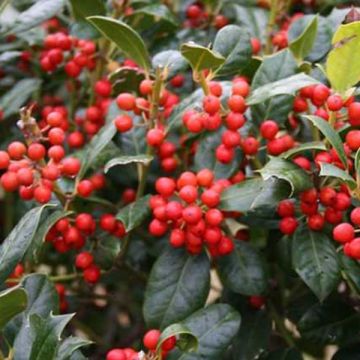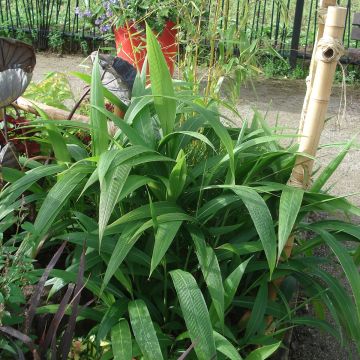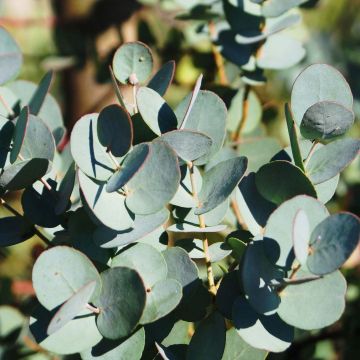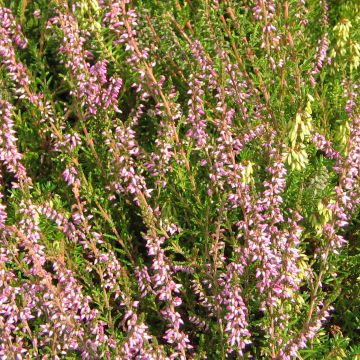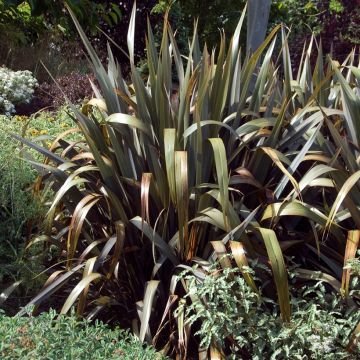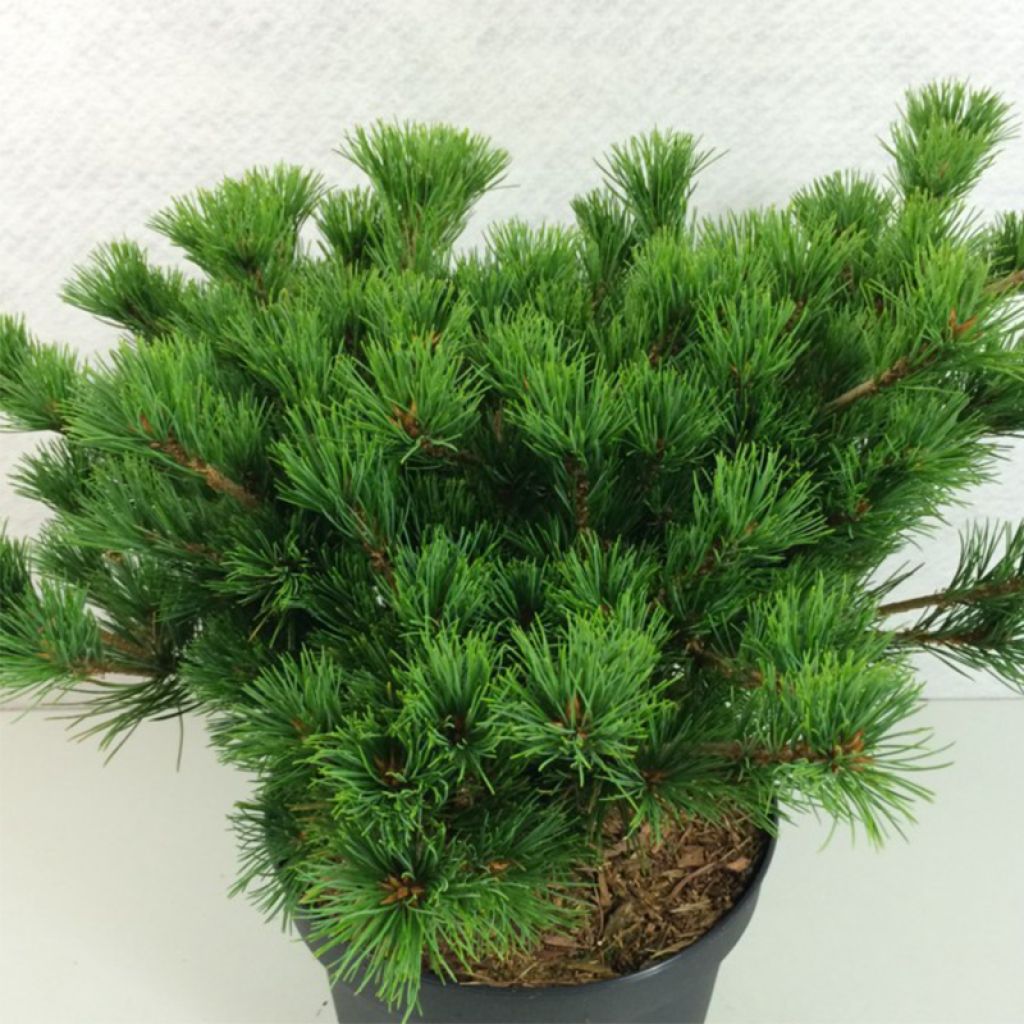

Pinus parviflora Kokuho - Pin blanc du Japon
Pinus parviflora Kokuho - Japanese White Pine
Pinus parviflora Kokuho
Japanese White Pine, Five-needle Pine, East Asian White Pine
Recent purchase...planted immediately in a pot and is growing normally. Delivered in good condition. Matches the photo on your website well.
marie christine garsault laudat, 15/10/2016
This item cannot be shipped to the selected country
Delivery charge from €5.90
Delivery to Corse prohibited
More information
Schedule delivery date,
and select date in basket
This plant carries a 24 months recovery warranty
More information
We guarantee the quality of our plants for a full growing cycle, and will replace at our expense any plant that fails to recover under normal climatic and planting conditions.
From €5.90 for pickup delivery and €6.90 for home delivery
Express home delivery from €8.90.
Delivery to Corse prohibited: UE law prohibits the import of this plant from mainland France to Corse as part of the fight against Xylella fastidiosa. Please accept our sincere apologies.
More information
Does this plant fit my garden?
Set up your Plantfit profile →
Description
Pinus parviflora 'Kokuho' is a miniature form of the Japanese white pine, with slow growth and a naturally globose, ramified, and stout habit throughout its life. Its foliage consists of short branches bearing turbinate green-blue needles and beautiful red buds. Like all Japanese pines, it tolerates pruning well, allowing for the creation of a living, almost eternal sculpture. It is an ideal variety for pots and rockeries. Undemanding and very frugal, this small conifer prefers sun and well-drained soils. It tolerates drought fairly well.
Pinus parviflora, also known as the Japanese white pine or five-needle pine, is a plant of the pine family native to forests located at altitudes between 1300 and 1800m (4265 and 5905ft) in the Japanese islands. In its natural environment, this species reaches a height of over 20m (66ft) and has a pyramidal habit, often as wide as it is tall, with a dense conical crown. Appreciated for its wood in Japan, this elegant species has given rise to very beautiful forms, often trained as bonsai trees.
Originating from Japan, the 'Kokuho' variety, derived from this species, has long been appreciated there for its very small size and particularly globular, almost round habit, supported by a well-ramified framework and its beautiful bluish foliage. Its growth is slow, around 12cm (5in) per year, and becomes more subdued with age. An adult specimen will slowly reach 1m (3ft) in all directions. Its slightly twisted branches, covered with a brown-black bark, bear medium-sized needles measuring from 4 to 6cm (2in) long. They are slightly curved, grouped in fives, and arranged in dense, somewhat tousled tufts. In spring, the light red buds give way to young shoots with blue-silver reflections, creating a magnificent contrast of colours. The reflections perceived on the needles are due to the presence of blue and silver lines on their green background. The bark of this small tree exfoliates in scaly plates over time.
Still little known in cultivation, the Japanese white pine 'Kokuko' will find its place in all gardens, from the north to the south, as its Japanese origins do not prevent it from thriving in very different climates, it is perfectly hardy. In small spaces, this timeless tree will stand out when planted alone and will majestically and wisely animate a rockery or a bed. It will of course form a magnificent specimen that will enhance the balcony or terrace in a large pot, a marvel in a Japanese garden. It pairs well with large stones, the geometric lines of swimming pools, and masonry works. It can be associated with complementary grasses or sacred bamboo, in a very "zen" spirit. These plants, with their reassuring permanence, structurally define a bed, mark pathways, and border the terrace, easily substituting for the strong presence of trimmed boxwood or holly.
Report an error about the product description
Pinus parviflora Kokuho - Japanese White Pine in pictures
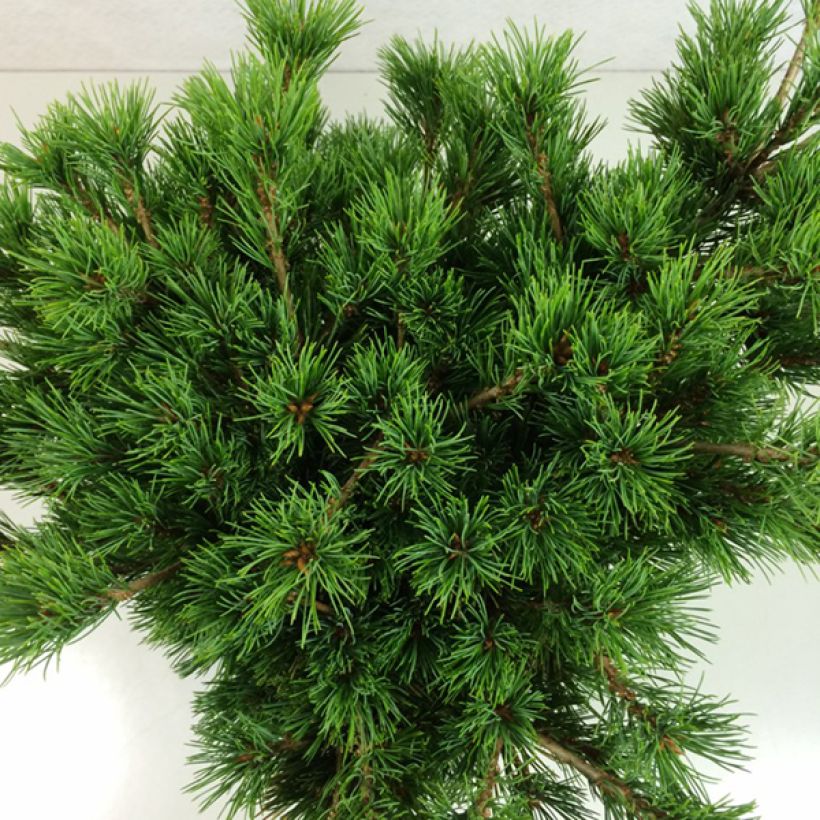

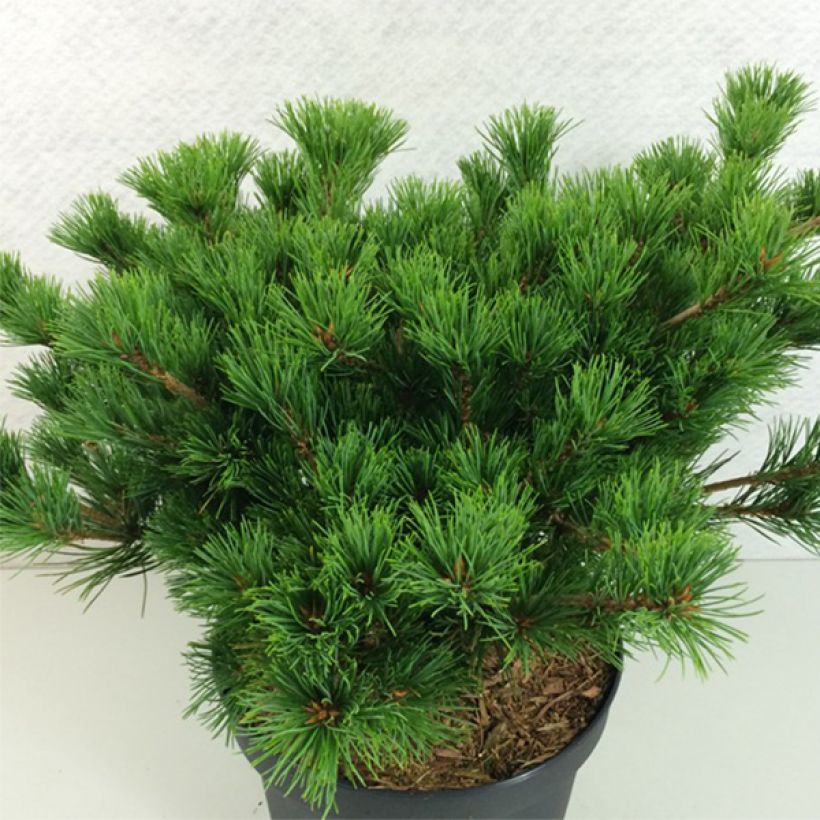

Plant habit
Foliage
Botanical data
Pinus
parviflora
Kokuho
Pinaceae
Japanese White Pine, Five-needle Pine, East Asian White Pine
Cultivar or hybrid
Other Pinus - Pine
Planting and care
Pinus parviflora 'Kokuho' is planted from September to November and from February to June in ordinary soil, even poor, even limestone, but well-drained. Choose a sunny location or, at most, partially shaded in hot climates. Soak the root balls well before planting. Add organic amendment to the planting hole and water generously for the first two years, and in case of prolonged drought. In very poor soil, optionally apply a special conifer fertilizer every year in April and cultivate the soil in summer. This very hardy conifer (up to -20°C (1°F) at least) is not afraid of wind, adapts to poor soils, but dreads waterlogged soils in winter and summer heatwaves. To maintain it in even smaller dimensions, annual pruning can be done from September to November by shortening any aesthetically unpleasing shoots to achieve the desired shape over the years.
Planting period
Intended location
Care
-
, onOrder confirmed
Reply from on Promesse de fleurs
Evergreen shrubs
Haven't found what you were looking for?
Hardiness is the lowest winter temperature a plant can endure without suffering serious damage or even dying. However, hardiness is affected by location (a sheltered area, such as a patio), protection (winter cover) and soil type (hardiness is improved by well-drained soil).

Photo Sharing Terms & Conditions
In order to encourage gardeners to interact and share their experiences, Promesse de fleurs offers various media enabling content to be uploaded onto its Site - in particular via the ‘Photo sharing’ module.
The User agrees to refrain from:
- Posting any content that is illegal, prejudicial, insulting, racist, inciteful to hatred, revisionist, contrary to public decency, that infringes on privacy or on the privacy rights of third parties, in particular the publicity rights of persons and goods, intellectual property rights, or the right to privacy.
- Submitting content on behalf of a third party;
- Impersonate the identity of a third party and/or publish any personal information about a third party;
In general, the User undertakes to refrain from any unethical behaviour.
All Content (in particular text, comments, files, images, photos, videos, creative works, etc.), which may be subject to property or intellectual property rights, image or other private rights, shall remain the property of the User, subject to the limited rights granted by the terms of the licence granted by Promesse de fleurs as stated below. Users are at liberty to publish or not to publish such Content on the Site, notably via the ‘Photo Sharing’ facility, and accept that this Content shall be made public and freely accessible, notably on the Internet.
Users further acknowledge, undertake to have ,and guarantee that they hold all necessary rights and permissions to publish such material on the Site, in particular with regard to the legislation in force pertaining to any privacy, property, intellectual property, image, or contractual rights, or rights of any other nature. By publishing such Content on the Site, Users acknowledge accepting full liability as publishers of the Content within the meaning of the law, and grant Promesse de fleurs, free of charge, an inclusive, worldwide licence for the said Content for the entire duration of its publication, including all reproduction, representation, up/downloading, displaying, performing, transmission, and storage rights.
Users also grant permission for their name to be linked to the Content and accept that this link may not always be made available.
By engaging in posting material, Users consent to their Content becoming automatically accessible on the Internet, in particular on other sites and/or blogs and/or web pages of the Promesse de fleurs site, including in particular social pages and the Promesse de fleurs catalogue.
Users may secure the removal of entrusted content free of charge by issuing a simple request via our contact form.
The flowering period indicated on our website applies to countries and regions located in USDA zone 8 (France, the United Kingdom, Ireland, the Netherlands, etc.)
It will vary according to where you live:
- In zones 9 to 10 (Italy, Spain, Greece, etc.), flowering will occur about 2 to 4 weeks earlier.
- In zones 6 to 7 (Germany, Poland, Slovenia, and lower mountainous regions), flowering will be delayed by 2 to 3 weeks.
- In zone 5 (Central Europe, Scandinavia), blooming will be delayed by 3 to 5 weeks.
In temperate climates, pruning of spring-flowering shrubs (forsythia, spireas, etc.) should be done just after flowering.
Pruning of summer-flowering shrubs (Indian Lilac, Perovskia, etc.) can be done in winter or spring.
In cold regions as well as with frost-sensitive plants, avoid pruning too early when severe frosts may still occur.
The planting period indicated on our website applies to countries and regions located in USDA zone 8 (France, United Kingdom, Ireland, Netherlands).
It will vary according to where you live:
- In Mediterranean zones (Marseille, Madrid, Milan, etc.), autumn and winter are the best planting periods.
- In continental zones (Strasbourg, Munich, Vienna, etc.), delay planting by 2 to 3 weeks in spring and bring it forward by 2 to 4 weeks in autumn.
- In mountainous regions (the Alps, Pyrenees, Carpathians, etc.), it is best to plant in late spring (May-June) or late summer (August-September).
The harvesting period indicated on our website applies to countries and regions in USDA zone 8 (France, England, Ireland, the Netherlands).
In colder areas (Scandinavia, Poland, Austria...) fruit and vegetable harvests are likely to be delayed by 3-4 weeks.
In warmer areas (Italy, Spain, Greece, etc.), harvesting will probably take place earlier, depending on weather conditions.
The sowing periods indicated on our website apply to countries and regions within USDA Zone 8 (France, UK, Ireland, Netherlands).
In colder areas (Scandinavia, Poland, Austria...), delay any outdoor sowing by 3-4 weeks, or sow under glass.
In warmer climes (Italy, Spain, Greece, etc.), bring outdoor sowing forward by a few weeks.

































